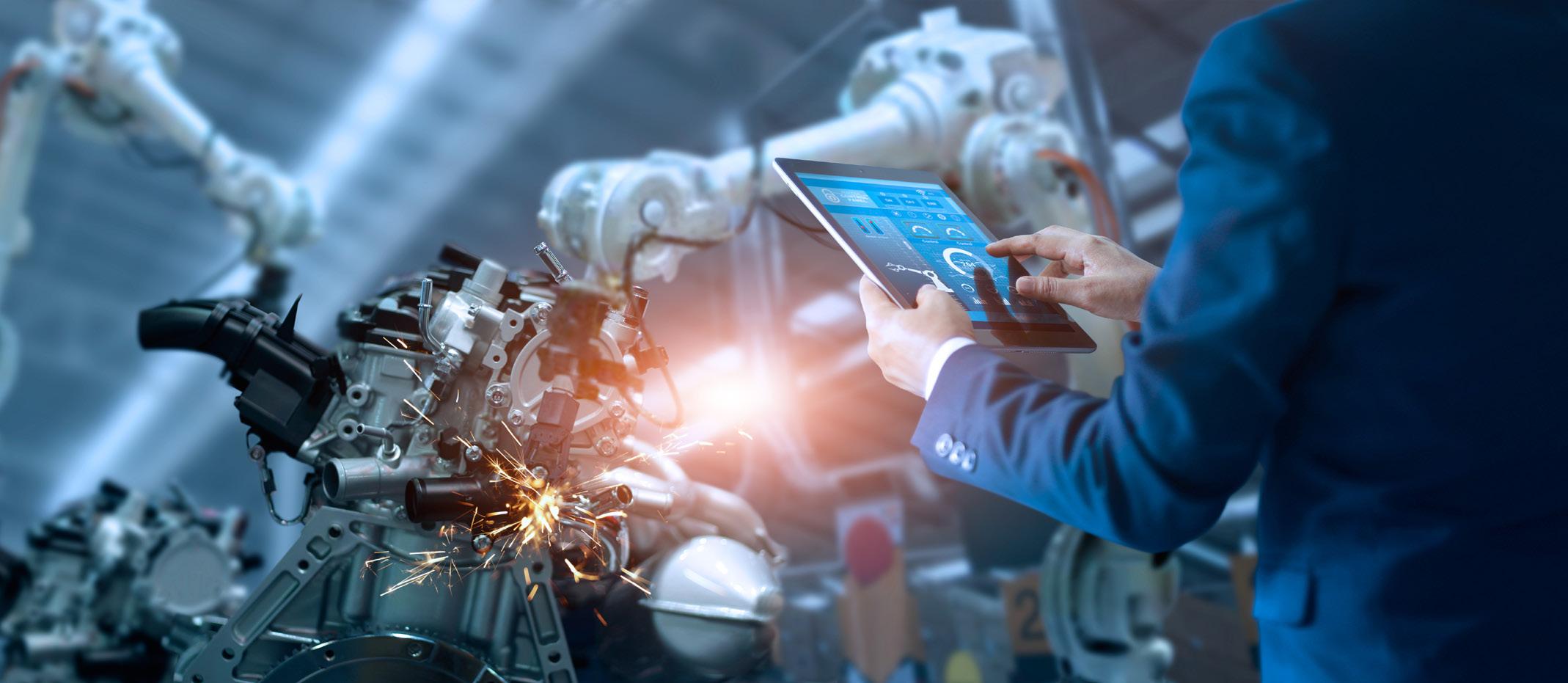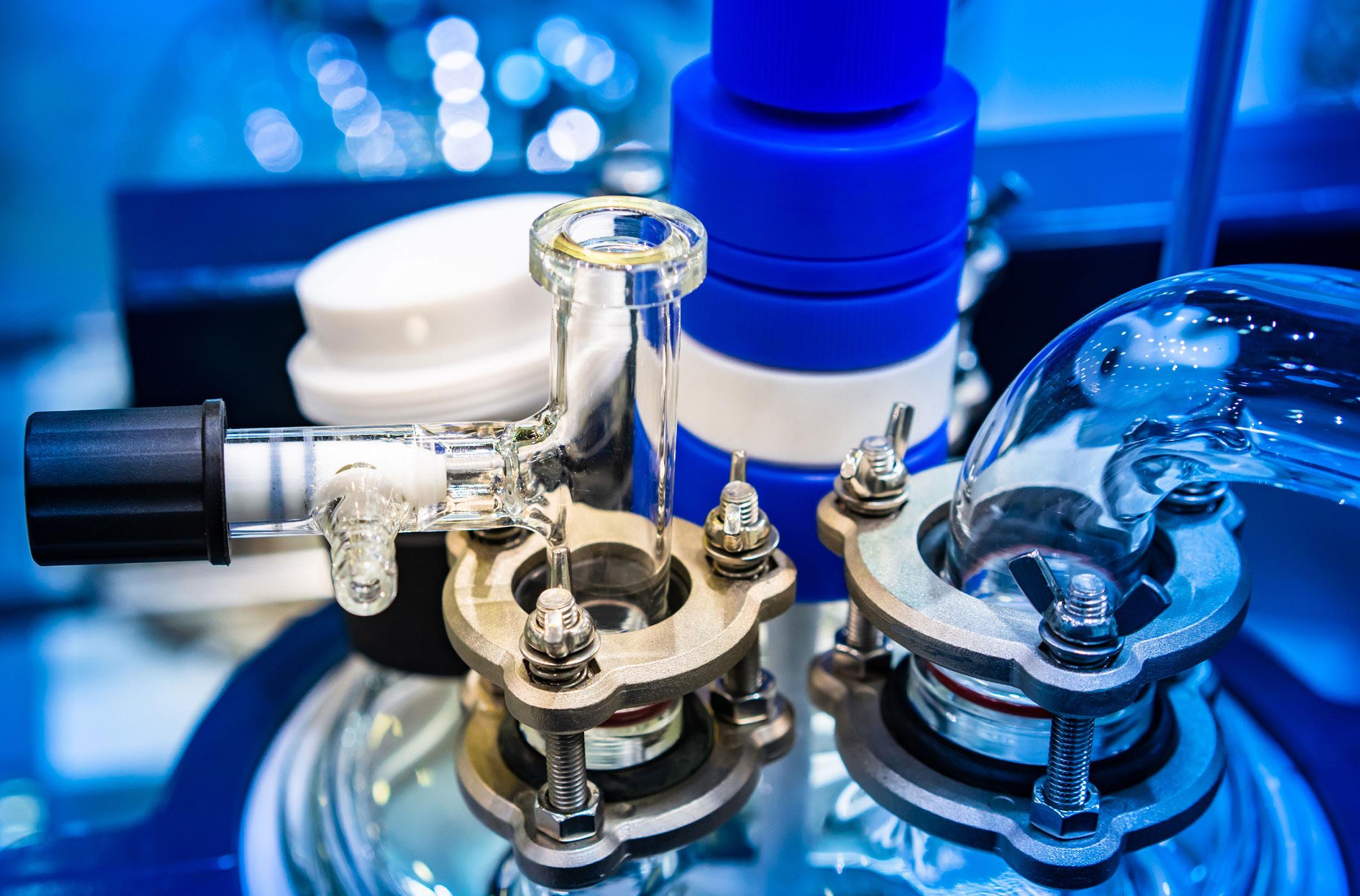
7 minute read
NANDAN MISHRA
FOUNDER & CEO, ALGO8 INC.
AI PLAY IN CHEMICALS
Advertisement
they are indirect. AI makes computers capable of performing tasks that would traditionally depend on the cognitive abilities of humans, such as observation, learning, decision making and problem-solving. Now imagine that all the computers and control systems involved in a factory process, say a chemical plant producing petrochemicals, are armed with AI capabilities. One wouldn’t need a human operator to perform basic process-control operations such as observing and maintaining parameters such as processpressure, fluid flow rates, temperature and so on. The computer reporting the process parameters like pressure, speed or temperature itself is aware of these values. It is no longer simply measuring and displaying them for the operators. Rather, they have been trained to know which values of process parameters are desirable, which are safe, and which are not. So, effectively the workflow for several process control functions can easily be simplified from Process out of bounds > The control device registers
The pace at which our industries are getting digi- change > Operator registers change > tized is ever-increasing; I mean, it’s pretty intui- Operator decides the course of action tive if you think about it. The more digitization > Operator uses the control panel to fix we have, the more digital information we have change > Process rectified. To a much access to, and that just make making digital busi- more concise and faster workflow: Proness models easier. For the last couple of decades, we have cess out of bounds > Computer registers had widespread computer infrastructures installed in large change > AI-based corrective measure > and process-driven industries such as chemicals, manufac- Process rectified. turing, oil & gas, etc. And they have been in place, So clearly, one of the prigathering massive volumes of process and indus- mary advantages of smart trial data over the years. The problem however “AI-powered factories will be the fact remained, that we did not have the means to solutions have that several processes utilize these data-stores to their full potential. unlocked predictive will be completely au-
However, with the advent of advanced Ar- asset maintenance tomated. Without the tificial Intelligence (AI) and Machine Learn- capabilities, process need to depend on pering (ML), we finally can make our computer tracking and sonnel to carry out these systems intelligent and do the work for us. Es- optimization” tasks, computers can sentially, digitization technologies have reached a achieve far superior results stage of sophistication where we can equip indus- and much snappier response trial setups with ‘self-conscious’ computer systems; this times, since their action is instanwill be the next iteration of Industry 4.0, where we will see taneous. Any scope for inefficiencies in Smart Factory setups become commonplace. the operations due to oversight or hu-
Chemicals play a crucial role in the industry as well as a man error gets eliminated, workflows society since they can be found in a wide variety of everyday become more streamlined with fewer products from automobiles and medicines to toys and clothes moving parts, and well, the computer which means the impact that AI will have on the chemical in- core can simply handle far more infordustry, will greatly impact us all via multiple channels, even if mation than a human mind is capable

of, so the analytical and reporting capacities see a giant leap.
AI-powered solutions have unlocked predictive asset maintenance capabilities, process tracking and optimization. Traditional methods for maintenance of industrial assets have been reactive; which means that there would have to be a noticeable disturbance to operations or component failure for mainte-
nance activities to take place. The damage gets done and then we fix it.
With cutting-edge industrial Internet of Things (IIoT) networks, AI has the power to keep a much closer eye on the equipment. For instance, cooling towers and condenser units are critical assets in the chemicals sector and they have historic data for them. Now, an AI-model can feed the operational and maintenance data for these assets which have been accumulated and stored in silos, which will study and analyze these historic records. It will identify trends in and changes in operational parameters around a reported breakdown event, and now when deployed the AI would be capable of spotting signs of distress to the equipment with a significant lead time, weeks or even months before any damage is taken or the process is disturbed.
To give an oversimplified example,
the pressure in the condenser unit spikes three times before past breakdowns. Under normal circumstances, the three spikes themselves might be within operational parameters, nothing to be alarmed about. But the AI will pick up the pattern, along with various related fluctuations, and alert the personnel that the condenser needs some maintenance right now, or the unit will experience a breakdown in some time.
With these data-driven insights, maintenance crews can keep a hawkeye on the health and working condition of equipment and transform their practices into proactive maintenance rather than reactive methods. There are highly-sophisticated AI-solutions out there already, and some even provide recommendations for what corrective action should be taken. This way, there is a much greater visibility, the longevity of the equipment increases significantly, supply-chain operations can be better planned with visibility over spares requirements, and most importantly, unplanned downtimes are avoided. They contribute to significant capital and operational losses, which can now be precluded by integrating AI-solutions.
IIoT networks can even provide a level of operational visibility where AItools can provide optimization insights and recommendations at a very granular level and identify anomalies in the processes. With large factories and several multiples of assets, it becomes very challenging to coordinate operations across different teams working on a variety of operations. In the chemicals sector, even small anomalies can have a huge effect on the quality of the final product. Early identification and rectification is going to be key for large-scale operations to maximize their production efficiencies and optimize the processes.
The awareness of industrial spaces

can be taken to the next level if the AI is integrated with the CCTV and additional camera networks on board. This unlocks major computer vision capabilities which have multi-faceted applications for businesses.
Deep learning-based AI-models can be implemented to perform advanced facial and object detection tasks which can further be repurposed for a wide variety of use cases. Workspaces will soon be equipped with fully automated and intelligent employee and visitor management systems. A person would simply have to walk into a building of work and a CCTV camera would pick them up.
Subsequently, the AI will run a scan of this person’s face and identify if they’re an employee or not; if they are, they’re attendance will be marked. And if they’re not, then they will be tagged as a visitor and their location can be constantly monitored without the need for an operator to sit behind an elaborate console and manually watch this person walk from screen to screen.
Security networks can be tightened and largely automated. With the reach of CCTV webs and the observational and analytical capacity of AI, workspaces across industries can be enabled with features such as crowd management, mask & PPE detection, social distancing violation alerts, fire & smoke detection, vehicle identification and Automated Number Plate Recognition (ANPR).
Another major application that AItools serve is that of process optimization which goes hand in hand with maximizing the energy efficiency of industrial operations. With the heightened visibility over operations and assets and employees and everything else, AI can even be smart enough to suggest overall process and design alterations/ improvements to maximize resource and energy efficiency, while minimizing waste generated, carbon footprints and overall costs.
For example, Borealis is an Austrian chemical company, the world’s eighthlargest producer of Polyethylene and Polypropylene, and they have deployed an AI-tool to develop dynamic target values for the energy consumption of a plant, improving the facility’s energy usage and thus cutting emissions and costs.
The rising pace of digitization is pushing the frontiers of industrial technologies and AI-solutions. The potential that AI has to offer is enormous and it will soon become a staple in industries everywhere, offering to maximize managerial and process efficiencies, deflate maintenance and functional costs, avoid unplanned downtimes, and drive operations to achieve business goals and benchmarks. There is a massive number of resources and time being poured into the research and development of intelligent future-first technologies, and their presence and impact will continue to rise.










